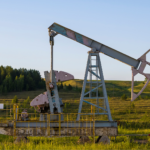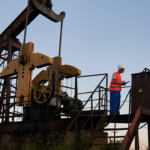Leasing your mineral rights can be a game-changer when it comes to achieving long-term financial security. Whether you’re sitting on oil, gas, or other valuable minerals, leasing these rights can offer an excellent way to generate steady income without giving up ownership. In this blog, we’ll break down the process of leasing mineral rights, explore its benefits, and highlight how Paint Rock Royalty can help you make the most out of your assets.
Why Consider Leasing Your Mineral Rights?
Leasing mineral rights provides an opportunity to enjoy financial rewards while retaining ownership of your property. Here are some key benefits:
- Consistent Income Stream: Leasing allows you to receive regular royalty payments, ensuring steady cash flow over time. These payments are often calculated as a percentage of the revenue generated by mineral production.
- Reduced Risk: Exploration and drilling can be risky and expensive. Leasing shifts this burden to the lessee, who assumes responsibility for the costs and risks involved.
- Retain Ownership: Unlike selling, leasing means you still own the rights to your minerals, allowing you to benefit from future developments or increased resource value.
- Maximize Your Property’s Potential: Leasing lets you unlock the hidden value of your property without having to invest time or money in the extraction process.
How Does Mineral Rights Leasing Work?
Leasing mineral rights typically involves the following steps:
- Evaluation of Your Property: The first step is determining the value of your mineral rights. Experts at Paint Rock Royalty use advanced tools and market data to evaluate your property accurately.
- Negotiating Lease Terms: Lease agreements outline important details such as the lease bonus, royalty rates, and duration. A well-negotiated lease ensures you get fair compensation while protecting your interests.
- Signing the Lease Agreement: After terms are agreed upon, you’ll sign the lease, granting the lessee the right to explore and extract minerals for a specified period.
- Receiving Royalties: Once extraction begins, you’ll start receiving royalty payments based on production revenue.
Lease vs. Sell: What’s Right for You?
While leasing is a popular option, it’s worth comparing it with selling your mineral rights. The table below highlights the key differences:
| Factor | Leasing | Selling |
| Ownership | Retain ownership | Transfer ownership permanently |
| Income | Regular royalty payments | One-time lump sum |
| Risk | Lessee assumes production risks | No involvement post-sale |
| Future Value | Benefit from future developments | No claim on future value |
For most mineral rights owners, leasing allows you to maximize the value of your mineral rights while retaining control over their property.
Factors That Impact Lease Value
Several factors can influence the value of your mineral rights lease:
- Location of Property: Areas with active drilling or proven reserves tend to attract higher offers.
- Market Demand: High demand for specific resources, like oil or gas, can drive up lease bonuses and royalty rates.
- Lease Terms: Negotiating favorable terms, such as higher royalty rates, can significantly impact your earnings.
- Expert Guidance: Working with trusted partners like Paint Rock Royalty ensures you secure the best deal possible.
The Role of Paint Rock Royalty in Leasing Your Mineral Rights
Here’s how we can assist you:
- Expert Valuation: Our team provides accurate and transparent evaluations of your mineral rights to ensure you understand their worth.
- Negotiation Support: We help negotiate favorable lease terms, including competitive bonuses and royalty rates.
- Comprehensive Guidance: From legal considerations to financial implications, we guide you through every step of the leasing process.
How Leasing Contributes to Long-Term Financial Security
Leasing your mineral rights isn’t just about immediate income—it’s a strategic move for long-term financial security. Here’s why:
- Passive Income for Years: Royalty payments provide a reliable source of income, perfect for funding retirement or major life expenses.
- Diversification of Wealth: Leasing helps diversify your financial portfolio, reducing reliance on other volatile investments.
- Retained Asset Control: By keeping ownership of your mineral rights, you maintain the flexibility to adapt to changing market conditions.
- Inheritance Potential: Retained mineral rights can be passed down to future generations, securing their financial future.
Case Study: Success Through Leasing
Scenario:
A landowner in Texas with proven oil reserves was unsure whether to sell or lease their mineral rights. With guidance from Paint Rock Royalty, they opted to lease their rights.
Outcome:
- Upfront Bonus: $50,000 signing bonus.
- Royalty Payments: Consistent monthly income of $5,000 for over five years.
- Retained Ownership: Ability to re-lease the property after the lease expired.
By leasing instead of selling, the landowner enjoyed long-term financial security without giving up their asset.
Takeaways
Leasing your mineral rights is a smart way to generate consistent income while retaining ownership of your assets. With the help of Paint Rock Royalty, you can navigate the leasing process confidently and ensure you’re getting the most value from your property.
Ready to take the next step? Contact Paint Rock Royalty today and let us help you maximize the value of your mineral rights!
Frequently Asked Questions
How do I determine the value of my mineral rights?
The value depends on factors like location, resource type, and market demand. Paint Rock Royalty offers professional evaluations to help you understand your asset’s worth.
What is a typical royalty rate for leasing mineral rights?
Royalty rates vary but usually range from 12.5% to 25% of production revenue. Negotiating higher rates can significantly boost your income.
Can I lease my mineral rights more than once?
Yes, once a lease expires, you can re-lease your mineral rights to another company, potentially at higher rates.
How long does a typical lease last?
Leases usually last between three to five years, with potential extensions depending on production activity.
What happens if no minerals are produced during the lease period?
If no production occurs, the lease typically expires, and you retain full control of your mineral rights.




